Fly Spray for Horses: Ingredients That Work (And When to Use Them)
- Horse Education Online

- Sep 16, 2025
- 11 min read
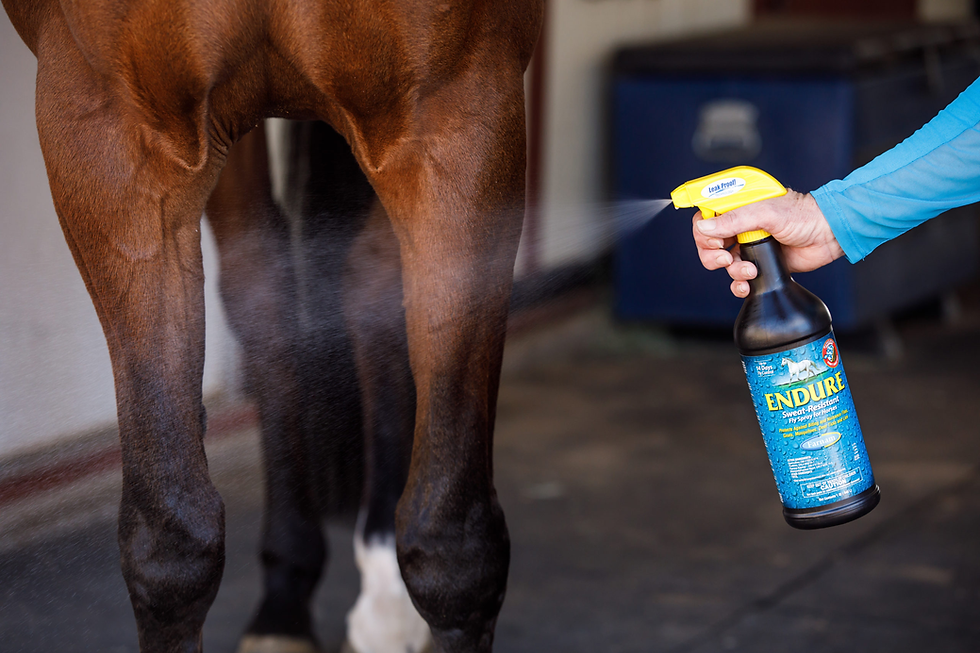
Flies aren’t just annoying, they affect comfort, work quality, skin health, and disease risk. The right spray can take pressure down fast, but results vary based on which insects you’re dealing with, the active ingredient class, and how you apply and reapply it.
This guide gives you a practical, barn-floor framework: identify the pests you have, match them to ingredients that work, and layer spray with integrated pest management (IPM) so you’re not respraying every hour. Keep scrolling for a quick pest ID, then dive into ingredients, application, reapplication schedules, and safety.
60-Second Answer
What works:
Pyrethroids (permethrin, cypermethrin, deltamethrin) = strongest, longer-lasting barn/turnout protection.
Pyrethrins = fast knock-down, short residual.
Botanical oils (citronella/geraniol/lemongrass/cedar) = mild, wear off fastest.
How to use: Apply to a clean, dry coat; hold bottle ~20–30 cm; use a cloth for the face; avoid eyes/mouth/sheath/udder; let dry before turnout or saddling; reapply after bathing or heavy sweat per the label.
Pair with management: Daily manure removal, aisle fans, traps, plus fly sheets/masks for best results.
If there’s a reaction: Rinse off, monitor vitals (see The Horse’s Vital Signs), and use our guide on How to Tell if Your Horse is Sick. Call your vet if hives/breathing changes persist.
Not sure which bottle to grab? Use the Fly Spray Toolkit—it recommends pyrethrins vs pyrethroids vs botanicals and when to top up after sweat or rain.
1) Know Your Enemy: Common Flies & When They’re Worst
Not all “flies” are the same. Stable flies, mosquitoes, midges, and horse/deer flies bite at different times, go for different body zones, and respond to different tactics—so your choice of spray and barn habits should match the pest you actually have.

Stable flies
These are the leg and belly biters. You’ll notice stomping, tail swishing, and little blood spots on white socks. They breed in wet hay/manure, so tidy aisles and fast manure pickup matter as much as spray.
House and horn flies
House flies pester the eyes and muzzle. Horn flies are more of a cattle issue but can swarm barns. Masks, ear nets, traps, and clean feed areas go a long way; use wipes for the face rather than spraying.
Horse and deer flies
Big, fast daytime biters. No spray completely stops them, but pyrethroid formulas can blunt the worst. Add physical barriers (fly sheets/masks) and consider pasture traps during peak months.
Mosquitoes
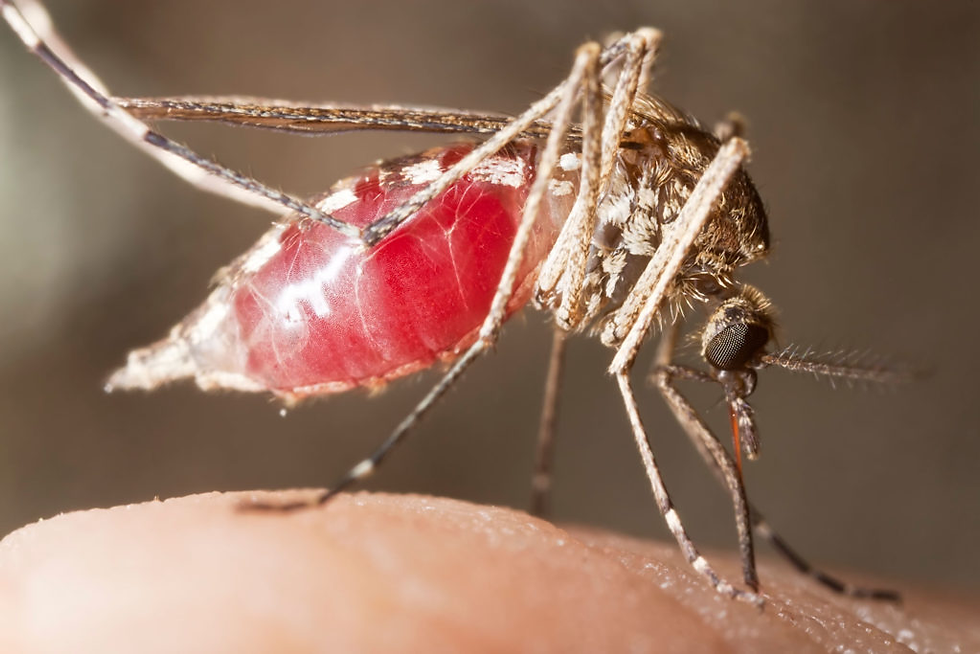
Peak at dusk and dawn, especially after rain or near standing water. They’re the main vector for West Nile Virus—review our West Nile Virus in Horses guide and make sure your vaccination plan is current (see the 5-Way Equine Vaccine explainer).
Midges (Culicoides)

Tiny dawn/dusk biters that can trigger sweet itch. Fans help (they’re poor fliers), and fine-mesh masks/sheets make a big difference. Expect to top up spray more often during still, humid evenings.
Aquatic insects & PHF context
Not biters, but mayflies/caddisflies collect around lights and water and are part of the Potomac Horse Fever story. Know the red flags in our Potomac Horse Fever—symptoms guide and see real-world timelines in the PHF case studies.
Quick cues
Worst in the morning with leg stomping? Think stable flies.Worst at dusk with constant ear-flicking? Think mosquitoes/midges.Match your spray to the pest, then layer fans, masks, and barn hygiene for lasting relief.
Quick Compare: Which Tactics Fit Which Pest?
Pest (pain point) | Peak Time / Conditions | What Helps Most (Quick Wins) | Spray Classes That Tend to Perform | Pro Tips |
Stable flies (leg biting, belly) | Warm, sunny, around manure/wet hay | Manure removal, leg protection, sticky traps | Pyrethroids (permethrin/cypermethrin) for residual; pyrethrins for fast knock-down | Hit legs/belly line; add fans in grooming/wash areas |
House/horn flies (face annoyance) | Warm days, feed zones, trash | Mask/ear net, bait/traps, tidy feed areas | Pyrethroids or pyrethrins; wipes for face | Wipe around eyes/muzzle; never spray directly at face |
Mosquitoes (WNV risk) | Dusk/dawn, humid, near water | Fans, dump standing water, turnout timing | Pyrethroids with “sweat-proof” claims | Keep vaccines current (see 5-Way); check windows/screens |
Midges (Culicoides) (sweet itch) | Dawn/dusk, still air | Fine-mesh masks/sheets, fans, stable at peak hours | Pyrethroids; frequent top-ups; botanicals as adjunct | Barrier gear + airflow are your best friends |
Horse/deer flies (painful bites) | Bright daytime, pastures near woods/water | H-traps, physical barriers, avoid peak turnout | Limited spray effect; pyrethroids modest help | Pasture trap placement matters; consider alternate paddock |
Aquatic insects / PHF context | Near lights/streams/rivers | Turn off barn lights at night, reduce attraction | Spray not directly relevant | Learn PHF symptoms + vital checks; review case studies |
Tip: If you see leg stomping and tail wringing by 10 a.m., stable flies are likely high. If the worst is at dusk, think mosquitoes/midges and shift turnout, add fans, and reapply accordingly. Use the Fly Spray Toolkit to adjust suggestions by pest type and turnout timing.
2) What Actually Works: Ingredient Cheat-Sheet
Not all “fly spray for horses” is built the same. Use this plain-English matrix to match ingredients to your horse, workload, and weather.
Active class | Examples | Best for | Typical residual | Sweat / rain notes | Watch-outs |
Pyrethrins | Pyrethrin + PBO | Fast knock-down in wash stall or before riding | Short (hours) | Reapply often; breaks down in sun/sweat | Patch test; occasional photosensitivity |
Pyrethroids | Permethrin, cypermethrin, deltamethrin | Broad, longer-lasting turnout protection | Longer (label-dependent) | “Sweat-proof” lines last longer; still reapply post-bath/heavy work | Keep off cats/fish; ventilate barns |
IGR / larvicide (program add-ons) | Diflubenzuron (feed-through) | Reduces new flies at the barn level | N/A (not a spray) | Use season-long; doesn’t replace spray | Plan with your vet; follow labels |
Botanical oils | Citronella, geraniol, lemongrass, cedar | Light to moderate pressure; sensitive horses | Very short | Top up frequently; shines on low-key days | Can irritate; patch test first |
Synergists | Piperonyl butoxide (PBO) | Boosts pyrethrins/pyrethroids | N/A | N/A | Only as directed; read labels |
Decide in 15 seconds: Open the Fly Spray Toolkit to compare pyrethrins, permethrin/cypermethrin, and botanicals for your climate and workload.
Quick translation
Longest staying power for turnout = pyrethroids (e.g., permethrin for horses).
Fast knock-down before you tack up = pyrethrin horse spray.
Want “gentler,” plant-based = natural fly spray for horses (botanical oils), but expect to reapply.
Seeing drop-off mid-season? Rotate the active class, not just the brand.
For real barn-wide relief, combine spray with IGR/feed-through and daily manure management (see Section 7).
3) Pick the Right Tool for the Job
Match the spray—and your routine—to the day you’re having. Small tweaks = big gains.
Turnout days
Short, simple, reliable.
Choose a pyrethroid formula with good residual (often marketed as “long-lasting” or “sweat-proof”).
Add fly mask/ear net; in stable-fly season, consider leg protection.
Lightly mist the legs, belly line, chest, neck, tailhead.
If flies are still relentless by mid-morning, add fans or shift turnout time.
Hard work / lessons
Sweat dilutes everything.
Look for labels that say “sweat-resistant”; apply to a clean, dry coat before riding.
For pre-ride knock-down, a quick pass of pyrethrin helps—then let dry before saddling.
After a sweaty ride, hose, towel dry, and reapply per label.
Signs you need a top-up: tail swishing, leg stomping, head tossing within 30–60 minutes.
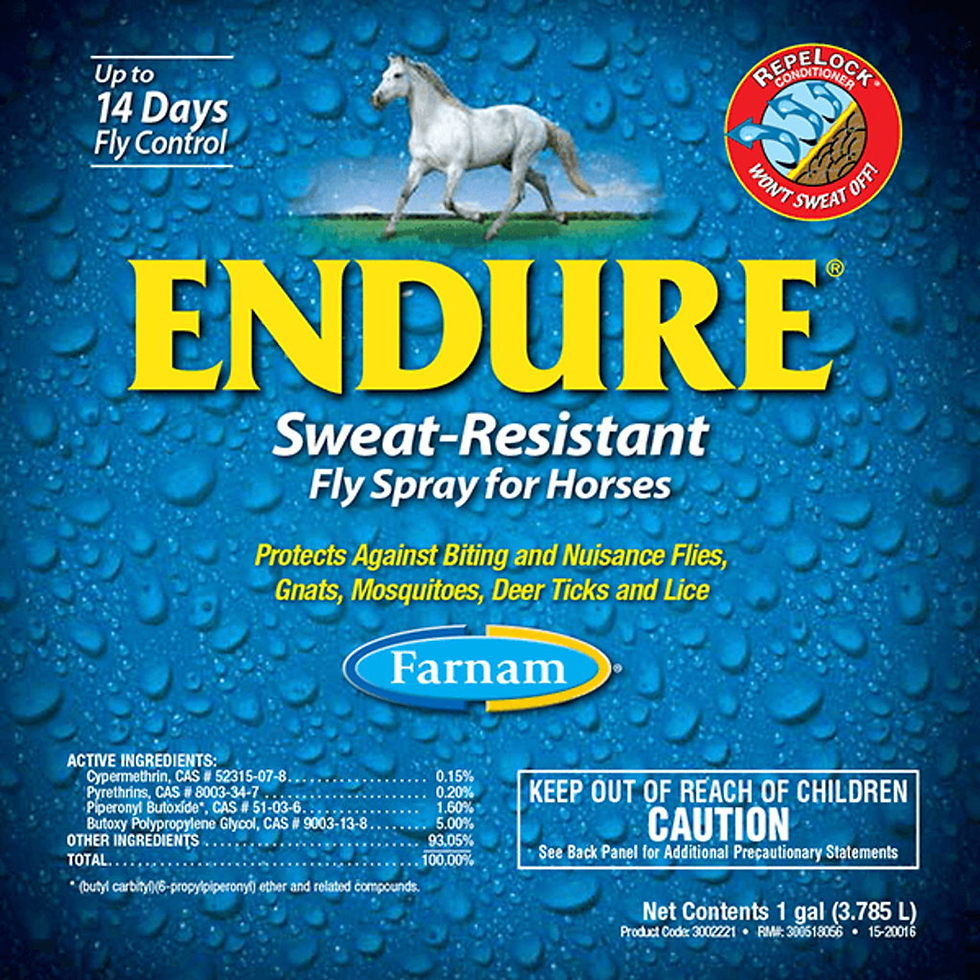
Rainy weeks / after baths
Water shortens residual—manage that.
After soaking rain or bathing, towel dry, wait a few minutes, then reapply.
Prioritize products with clear rainfast claims.
Avoid spraying over damp skin folds; this reduces irritation risk.
Foals, seniors, sensitive skin
Go low and slow.
Start with light coverage and a patch test (small area, wait 24 hours).
Use a cloth to wipe the face; avoid eyes, nostrils, mouth, sheath/udder.
If reactions occur (redness, hives), wash off, monitor vitals with our guide to The Horse’s Vital Signs, and see When to call your vet in Section 6.
For very sensitive horses or safe fly spray for foals, consider botanical or “sensitive-skin” labeled wipes—then reapply more often.
Confused between skin problems and insect irritation? “Rain bumps” and scabby patches after wet spells are often dermatitis, not just flies. See our Rain Rot guide.
Pro tips (fast wins)
If you need the best fly spray for horses during peak season, default to a pyrethroid for residual, and add management (fans, manure pickup).
For schooling in humid weather, a sweat-proof fly spray plus face wipes beats over-spraying the head.
Keep a small bottle in your grooming tote for spot top-ups before dusk turnout.
Log what you used and how long it lasted; if protection drops, switch classes (pyrethrin ↔ pyrethroid) rather than just swapping brands.
4) How to Apply Fly Spray Correctly
Good results start with clean, dry hair and a calm horse. Keep sessions short and routine so your horse learns what to expect.
Step 1 — Prep the area
Halters on, cross-ties or a quiet aisle. Ventilate well. Shake the bottle.
Step 2 — Start with the body
Hold the nozzle 20–30 cm (8–12 in) from the coat. Use smooth, overlapping passes. Don’t soak—aim for a light, even film.
Step 3 — Hit the hot spots
Legs (cannon to fetlock), belly line, chest/neck, withers, tailhead, and flanks. Lift the tail and mist lightly under the dock.
Step 4 — Do the face by hand
Spray a soft cloth, then wipe jowl, cheeks, and forehead. Avoid eyes, nostrils, lips, sheath/udder.
Step 5 — Let it set
Allow to dry fully before turnout or tacking. For rides, spray before you saddle; keep spray off the girth area to reduce irritation.
Step 6 — Store smart
Keep away from heat/sun. Close caps tightly. Never store near feed, fish tanks, or cat areas.
Do / Don’t (quick recap)
Do: patch test new products on a small area; wash hands after handling.
Don’t: spray broken skin, over damp sweat, or near feed/water buckets. If you see redness or hives, wash off and monitor with our guide to The Horse’s Vital Signs.
5) How Often to Reapply
Labels that promise “up to X days” are best-case, low-sweat, low-rain numbers. Real barns see shorter protection.
What shortens protection
Sweat & hard work: salt and moisture dilute repellents.
Rain/hosing/baths: water strips the film.
High pest pressure: mid-summer, dusk/dawn, or near manure piles.
Shampoo/coat products: squeaky-clean hair can reduce adherence.
Coat factors: body-clipped coats and thin tails often need more frequent top-ups.
Signs it’s time
Tail swishing returns within hours.
Leg stomping, belly biting, neck twitching at dusk.
Fresh midline welts or ear-flicking increase at turnout.
Rule-of-thumb intervals
Pyrethroids (e.g., permethrin, cypermethrin, deltamethrin): every 24–72 hours in light work; after heavy sweat or soaking rain.
Pyrethrins: great pre-ride knock-down; expect to reapply the same day.
Botanical/“natural” sprays: plan every 2–4 hours during peaks.
“Sweat-proof” lines: better cling, but still top up post-ride or post-storm.
Rotation that works
If a product suddenly “stops working,” switch active classes, not just brands (e.g., rotate pyrethrin ↔ pyrethroid). Keep notes in your grooming kit: date, product, conditions, and how long it lasted.
Sample micro-schedules
Schooling week, humid: pyrethroid Monday A.M., top-up after each sweaty ride, reassess Thursday.
Turnout-heavy, dusk mosquitoes: pyrethroid at lunch; quick pyrethrin wipe before evening turnout.
Sensitive skin/foal: light botanical in the morning, face wiped only, reassess at noon and dusk; add physical barriers (mask/sheet) to stretch intervals.
6) Safety & Side-Effects
Start every new fly spray for horses with a small patch test (hand-sized area, 24 hours). If the skin stays normal, proceed.
If you see redness, hives, or rubbing, wash off with mild shampoo and plenty of water. Then monitor vitals using The Horse’s Vital Signs and Average Heart Rate for a Horse. If hives persist, there’s facial swelling, laboured breathing, or your horse seems dull/off-feed, call your vet and review How to Tell if Your Horse is Sick.
Face = wipe only. Spray a cloth, then wipe cheeks, jowls, and forehead. Avoid eyes, nostrils, lips, sheath/udder, and any open wounds.
Working with foals or sensitive skin? Switch the “Sensitive” toggle in the Fly Spray Toolkit for gentler options and face-wipe guidance.
Handler safety matters. Use gloves for frequent use, avoid inhaling mist, and always spray in a well-ventilated area. Keep products far from feed, water, kids, cats, and aquariums (pyrethroids are toxic to fish).
Foals and sensitive skin. Go light, re-check the area in 12–24 hours, and consider “sensitive-skin” or botanical options. For safe fly spray for foals, start with minimal coverage and build up only if tolerated.
Storage & disposal. Store cool and out of sun; close caps tightly. Follow label directions for empty containers and spills.
Three quick rules
Patch test first.
Wipe—don’t spray—the face.
If in doubt, wash off and monitor with our vital-sign guides.
7) Beyond Spray: Integrated Pest Management (IPM)
Spray works best when the environment works with you. Think small habits, done daily.
Daily wins
Pick stalls and runs, remove wet bedding, and empty standing water. Run aisle/grooming fans during peak hours. Keep feed areas tidy and use traps where horses can’t reach.
Weekly rhythm
Compost or remove manure away from the barn and turn the pile. Scrub troughs/tubs. Refresh sticky tape or jug traps where flies actually congregate.
Turnout & gear
Use fly masks/ear nets; add leg protection in stable-fly season. Shift turnout away from dusk/dawn when mosquitoes and midges are worst. Fine-mesh sheets help sweet-itch horses.
Trap placement—simple rules
Place traps near doors, sunny walls, and manure lanes—not over feed. For horse/deer flies, add pasture traps in open, sunny spots.
Health tie-ins
Dusk mosquitoes raise West Nile risk—review West Nile Virus in Horses and keep vaccines current (see the 5-Way Equine Vaccine explainer). Near rivers or bright barn lights, learn Potomac Horse Fever red flags in our Symptoms guide, then study real timelines in the PHF Case Studies.
Make it trackable
Log morning/evening fly pressure (0–5), what you sprayed, and when you re-applied. If protection drops, rotate the active class (pyrethrin ↔ pyrethroid), not just the brand.
Conclusion
Flies aren’t one problem—they’re several. Match the pest to the active class (pyrethroids for staying power, pyrethrins for fast knock-down, botanicals for mild days). Apply on a clean, dry coat, wipe the face by hand, and reapply after sweat or rain. Layer in IPM—manure pickup, fans, traps, masks/sheets—so your spray isn’t doing all the work. If skin reacts, wash off and monitor vitals with The Horse’s Vital Signs, and use our guide on How to Tell if Your Horse is Sick when in doubt.
FAQ
What’s the best fly spray for horses in peak season?
When pressure is high, a pyrethroid (e.g., permethrin, cypermethrin, deltamethrin) usually gives the longest protection. Use pyrethrin for quick pre-ride knock-down, then rely on the pyrethroid for turnout. Add masks, fans, and manure control for lasting relief.
Pyrethrins vs pyrethroids—what’s the difference?
Pyrethrins act fast but fade quickly. Pyrethroids are synthetic cousins built to last longer and resist sun/sweat better. If your “all-day” spray quits by lunch, you may be using a pyrethrin when a pyrethroid is the better fit.
Are permethrin sprays safe for horses, foals, and pregnant mares?
Used as labeled, permethrin products are widely used in horses. For foals and sensitive skin, start with light coverage and a patch test first. Avoid eyes, nostrils, lips, and the sheath/udder. If you see hives or redness, wash off and check The Horse’s Vital Signs while you call your vet.
How often should I apply fly spray?
“Up to X days” on the label assumes ideal conditions. In real barns:
Pyrethroids: every 24–72 hours; always after heavy sweat or soaking rain.
Pyrethrins: often same-day top-ups.
Botanicals: plan every 2–4 hours in peak times.If protection drops suddenly, rotate the active class, not just the brand.
Does “sweat-proof fly spray” mean I can skip reapplying?
No. It means the formula clings better, not that it survives a hard, sweaty ride or bath. Hose, towel dry, then reapply per the label.
Is natural fly spray for horses effective?
Botanical blends (citronella, geraniol, lemongrass, cedar) can help on light-pressure days or for sensitive horses. Expect short residual and frequent top-ups. Many riders pair a botanical for schooling with a pyrethroid for turnout.
Why does my fly spray stop working mid-summer?
Usually a mix of higher pest pressure, sweat/rain, and coating wear—less often true resistance. Fix the basics first: apply to a clean, dry coat, cover legs/belly line, add fans and traps, then rotate active class if results stay poor.
How do I spray the face safely?
Don’t. Spray a cloth, then wipe cheeks, jowls, and forehead. Stay clear of eyes, nostrils, lips, and sheath/udder. For ear-gnats, use a mask with ears and time turnout away from dusk.
Can fly spray prevent West Nile Virus?
Fly spray reduces bites, but it doesn’t replace vaccination. Review West Nile Virus in Horses and keep your plan current—see the 5-Way Equine Vaccine explainer for how core vaccines fit together.
Are these products safe around cats, dogs, or fish tanks?
Keep pyrethrin/pyrethroid sprays away from cats and fish/aquariums. Store bottles sealed, out of sun, and never near feed or water. Spray in ventilated areas and wash hands after use.
What should I do if my horse breaks out in hives?
Wash off thoroughly, then monitor vitals with The Horse’s Vital Signs. If hives persist, there’s facial swelling, breathing changes, or your horse seems off, call your vet and review How to Tell if Your Horse is Sick.
Do fly sprays expire or lose potency in the tack room?
Yes. Heat and sunlight degrade actives. Store cool, out of sun, caps tight. If a bottle sits through a hot summer or overwinters in the trailer, expect weaker performance and replace it.


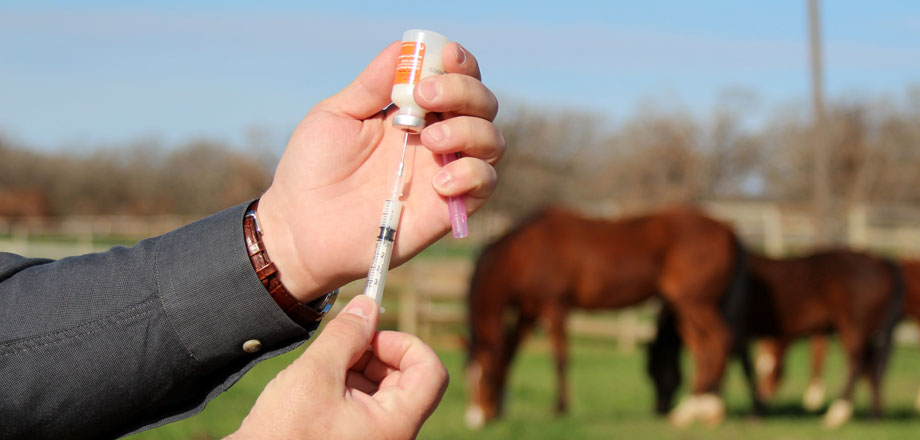


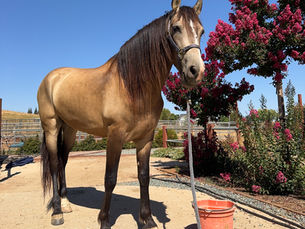




Comments